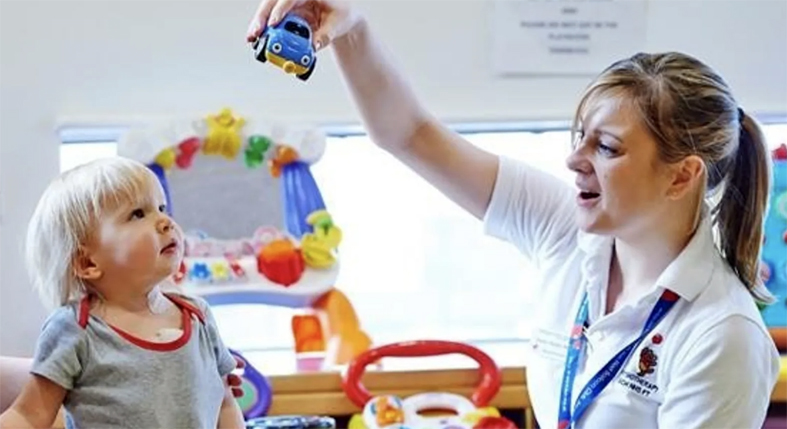Remote wireless monitoring gives early warning for sick kids
- April 20, 2021
- Steve Rogerson

A paediatric study found that remote wireless monitoring and machine learning can identify clinical deterioration in patients much earlier than existing early warning systems.
The study by a clinical team at Birmingham Children’s Hospital in the UK concluded that the use of a continuous wireless patient monitoring platform and a first-of-its-kind predictive indicator can aid detection of deterioration of paediatric patients significantly earlier than their current early warning scoring method. If adopted at scale, this could potentially save hundreds of young lives.
The Rapid (real-time adaptive predictive indicator of deterioration) project monitored nearly 1000 young in-patients ranging in age from newborns to 16 years in Birmingham from 2016 to 2019 using the Isansys PSE patient status engine to develop the Rapid Index, a personalised predicative algorithm or smart alarm that runs in the PSE.
The clinical research team then compared the Rapid Index to their current paediatric early warning scores (PEWS) in a retrospective analysis.
The team discovered that the Rapid Index could detect significant deterioration more frequently and earlier than the PEWS score. Earlier work in the study had revealed that wireless monitoring was more comfortable and preferred by families and patients.
Heather Duncan, an intensive care consultant at Birmingham Children’s Hospital, was principal investigator and clinical lead on the Rapid project. She said: “The advantage of continuous monitoring for patients on a hospital ward is that trends and big data analytics can be used to improve detection of deterioration. The Rapid Index can detect the majority of significant deteriorations before the current early warning system and it is effective at ruling out the likelihood of significant deterioration. By using the Rapid Index in addition to the PEWS system it is possible that some life-threatening events may be averted.”
She added that technology such as this meant vital signs recorded manually every one to four hours on paper charts would undoubtedly become a thing of the past, with continuous, individual monitoring that gave more accurate information helping lead to faster treatment and reducing hospital stays.
“Before starting the Rapid project we identified that children in hospitals sometimes do deteriorate quickly because observations were only being carried out either intermittently or infrequently and we sometimes missed these potentially life-threatening events,” she said. “This next generation technology is achieving remarkable efficiencies in terms of patient safety and data accuracy, which is crucial to providing quality patient care, reducing costs and handling higher patient volumes. As well as offering mobility, it offers so much more. It’s reshaping the future for both patients and healthcare providers alike.”
Keith Errey, chief executive of Oxford-based Isansys, said: “We are really delighted to have been part of this world-leading and highly innovative programme. During this part of the study, the PSE has monitored nearly 1000 children and we are pleased to see this new publication highlighting its abilities to aid early detection of deterioration, thus saving lives and opening the possibility of reducing length of stay and readmission rates for these young patients and their families for whom time in hospital is unwelcome and difficult. We are looking forward to the next phase of this exciting work, leading to the introduction of the PSE and Rapid Index as standard care, not only in Birmingham Children’s Hospital but also for children in hospitals everywhere.”





